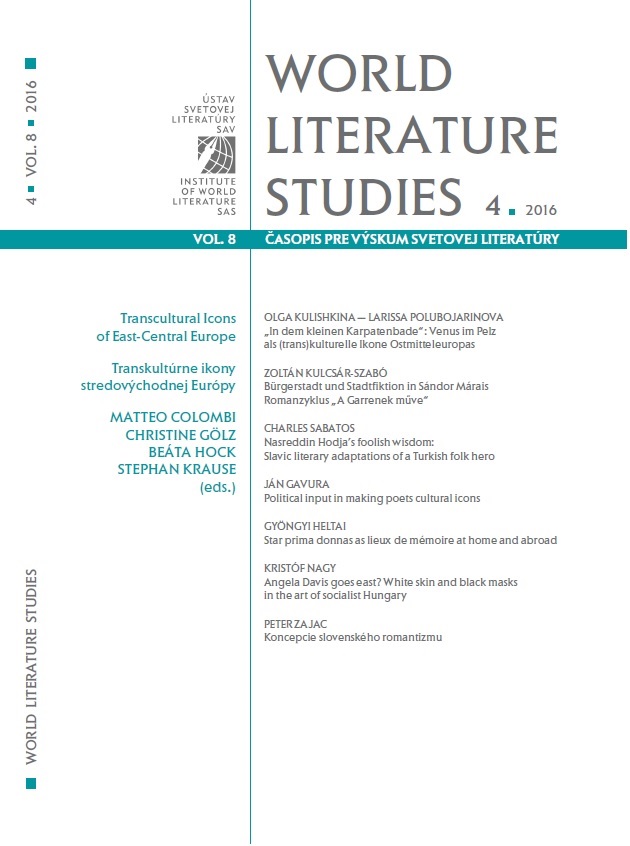Angela Davis goes east? White skin and black masks in the art of socialist Hungary
Angela Davis goes east? White skin and black masks in the art of socialist Hungary
Author(s): Kristóf NagySubject(s): Language and Literature Studies
Published by: SAV - Slovenská akadémia vied - Ústav svetovej literatúry
Keywords: Blackness in visual culture; State socialist dissident culture; Anti-colonial movements; Angela Davis
Summary/Abstract: This essay examines the meanings of blackness in the Hungarian art of the 1960s and 1970s,primarily through the trajectory of Angela Davis. In this period the artistic representationof blackness was widespread in socialist Hungary due to state-initiated solidarity campaignswith the subjugated subjects of the First and the Third World. Through the analysis of worksby Béla Kondor, Anna Kárpáti, György Kemény, Tamás Szentjóby and the Orfeo Group thearticle argues that these artists held different attitudes towards the black liberation struggles,but they were not isolated from the party-line on these insurgencies. Moreover, in certaincases the representation of the subjugated black cultural icons undermined the politics of thestate-solidarity, and served as the expression of the artists’ own struggles.
Journal: World Literature Studies
- Issue Year: 8/2016
- Issue No: 4
- Page Range: 77-94
- Page Count: 18
- Language: English

